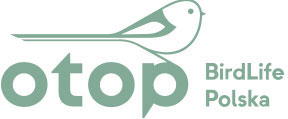Aquatic Warbler is one of the three globally threatened species of birds which regularly occur in Poland. Of these, it is the only bird species whose population in Poland forms a significant part (25%) of the world population. Therefore, our country has an exceptional responsibility to conserve this species. Aquatic Warbler is the so-called umbrella species of fen mires and marshy meadows, so talking about its protection we should always have in mind conservation of the entire ecosystem.
Aquatic Warbler is the rarest passerine migrant bird in Europe and also the only globally threatened bird on the continent. It is classified as ‘vulnerable’ on the IUCN Red List of Endangered Species (IUCN 2010) because of a rapid decrease of population numbers in the past and a limited breeding range (<1500 km²). Once numerous and widespread, it abandoned most of its breeding range following habitat loss. The world population is now estimated at 10,200 – 13,500 singing males, of which 25% inhabit Poland.
Poland is a signatory of the Memorandum of Understanding (MoU 2004), which is an agreement concerning the conservation needs of Aquatic Warbler. This document is part of the Convention on the Conservation of Migratory Species of Wild Animals (short: CMS or Bonn Convention). In 2009, Poland also accepted the International Species Action Plan for the Aquatic Warbler (Acrocephalus paludicola).
In Poland, there are two separate populations. The larger of them, inhabiting the eastern area of Poland (Podlasie and Lublin regions), together with the neighbouring Belarussian and Ukrainian populations forms the main European population. The Pomeranian population, whose breeding areas are located in north-west Poland and north-east Germany, is small and isolated.
Except for the countries with breeding areas, every year Aquatic Warblers are observed in 11 other states in Europe and Africa. The birds from Poland, Eastern Germany and probably also from the Polesie region, located in the borderland of Ukraine and Belarus, migrate westwards through the coast of the Baltic Sea in Poland and Eastern Germany, the coast of the North Sea (visiting western Germany, the Netherlands, Belgium and sometimes England), and then southwards along the French and Spanish Atlantic coast directly to Africa, where they spend winter. The migration route is quite long (16,000 – 20,000 km) and this is why the breeding season is relatively short.
The main threat which Aquatic Warbler faces is the loss of their habitat, which was drained on a large scale during the last century for peat excavation or agriculture. Only a few percent of fen mires escaped this fate, although even these have been negatively affected by drainage of the surrounding areas. Despite this, in some cases favourable conditions for Aquatic Warblers were maintained thanks to the implementation of traditional, extensive farming, based on hand-mowing and cattle grazing. As long as these activities were carried out, Aquatic Warblers could inhabit even slightly drained sites. However, cessation of extensive land use, which took place during the last decades, led to overgrowing of marshes by dense reeds or bushes and trees, which in turn resulted in a gradual loss of habitat.
Some areas face a reverse problem – deterioration of habitat due to intensification of farming in marshland through further draining, too frequent or too early mowing, or too intensive grazing. Early mowing or intensive grazing in the breeding period disturbs the birds and destroys their nests.
Another problem is the loss of habitat in areas where Aquatic Warblers rest during migration (Western Europe) and in wintering grounds (Africa). This can be compensated by the actions targeted at increasing the breeding population numbers, which are conducted in Poland.
As mentioned before, the main threat to Aquatic Warbler is habitat loss, as well as drainage and unfavourable land use (cessation of extensive farming or intensification of farming), which decrease habitat quality. In some areas, the first step is to restore the natural water level – through closing of ditches, building of sluices and adjusting the operation of water pumps. High water level also prevents growth of trees and bushes on marshes.
The second step is to introduce actions which imitate the traditional, but already abandoned farming practices – mowing or grazing – to eliminate reed or bushes, and maintain appropriate vegetation structure. In the current breeding range of Aquatic Warbler, mowing should be postponed until breeding is completed.

